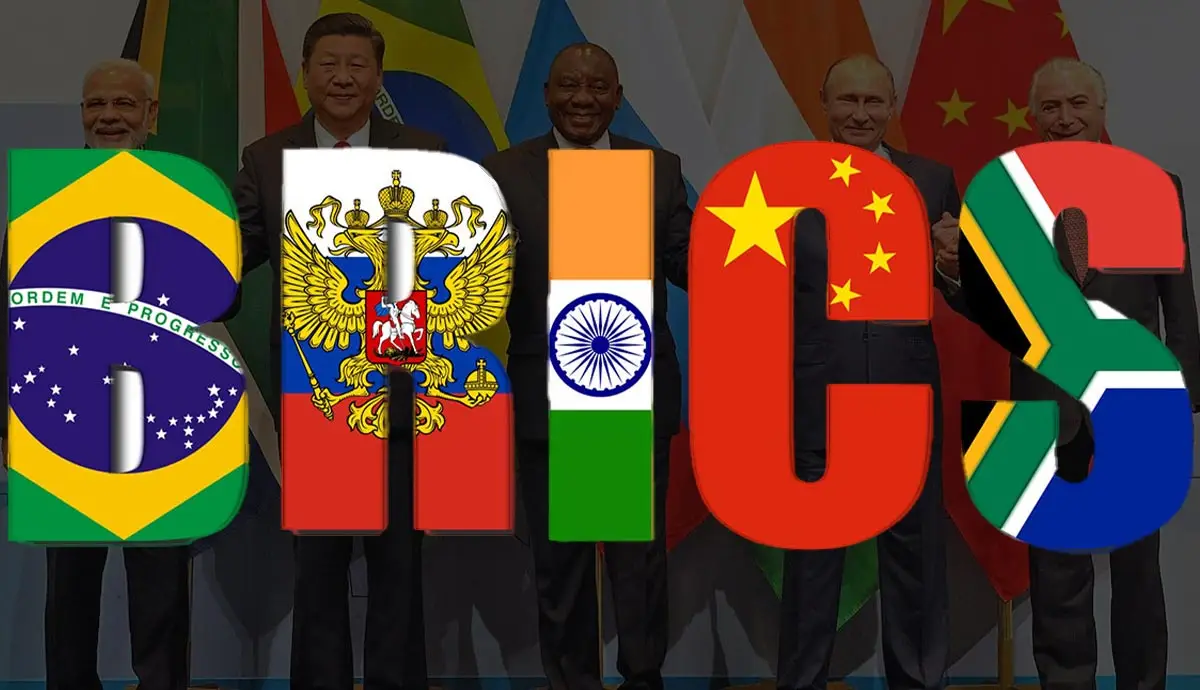
In an extraordinary turn of global economics, the BRICS countries – Brazil, Russia, India, China, and South Africa – are rapidly rewriting the script of global financial power. Initially projected by Goldman Sachs to overtake the G6 nations in economic might by 2035, this seismic shift is now poised to occur a decade earlier, by 2025. This development marks a pivotal moment in world affairs, where the BRICS nations are expected to collectively surpass 60% of the G6’s GDP, dramatically outpacing earlier forecasts.
The Expansion and Influence of BRICS
The BRICS bloc, originally comprised of five nations, has grown to ten, with Saudi Arabia, the United Arab Emirates, Egypt, Iran, and Ethiopia joining the fold. This expansion extends far beyond numbers; it amplifies the bloc’s global economic and political clout. Argentina, however, has chosen a different path, with President Javier Milei declining membership, signaling a divergent vision for Argentina’s future, distinct from the BRICS trajectory.
The surge in the BRICS’ GDP is a testament to their strategic economic policies, heavy investments in technology and infrastructure, and a united push towards sustainable growth. These nations are actively seeking independence from traditional Western financial systems, even considering reducing the US dollar’s dominance in their trade dealings – a move with potential to send shockwaves through the American economy and beyond.
The Evolution of Global Financial Leadership
The rise of the BRICS nations signifies more than just economic growth; it represents a fundamental shift in global financial leadership. This emerging new order challenges traditional power structures, emphasizing the increasing influence of these economies on global markets. The West, especially the United States, must rethink its economic and foreign policies in this evolving landscape. Ignoring the BRICS could result in missed opportunities and strategic missteps.
A potential move by BRICS nations to de-emphasize the US dollar in international trade could profoundly impact the American economy, potentially triggering hyperinflation, higher living costs, and job losses, thereby shaking the nation’s economic stability.
In conclusion, the BRICS countries are not merely catching up with the West; they are set to redefine global economic dynamics. Their rapid growth, expansion, and strategic alliances signal a shift to a new economic epoch. This change is not just a power transition; it’s a clarion call to the G6 nations to adapt to a world where economic influence is more diversified. As the BRICS continue to evolve, their influence on global economics, politics, and international trade is set to be significant and lasting. The once undisputed dominance of the West in global GDP is yielding to a more varied and multipolar world order, steered by the vibrant and ascending economies of the BRICS.


Aw, this was a really nice post. Taking a few minutes and actual effort to make a really good article… but what can I say… I procrastinate a whole lot and never manage to get anything done.